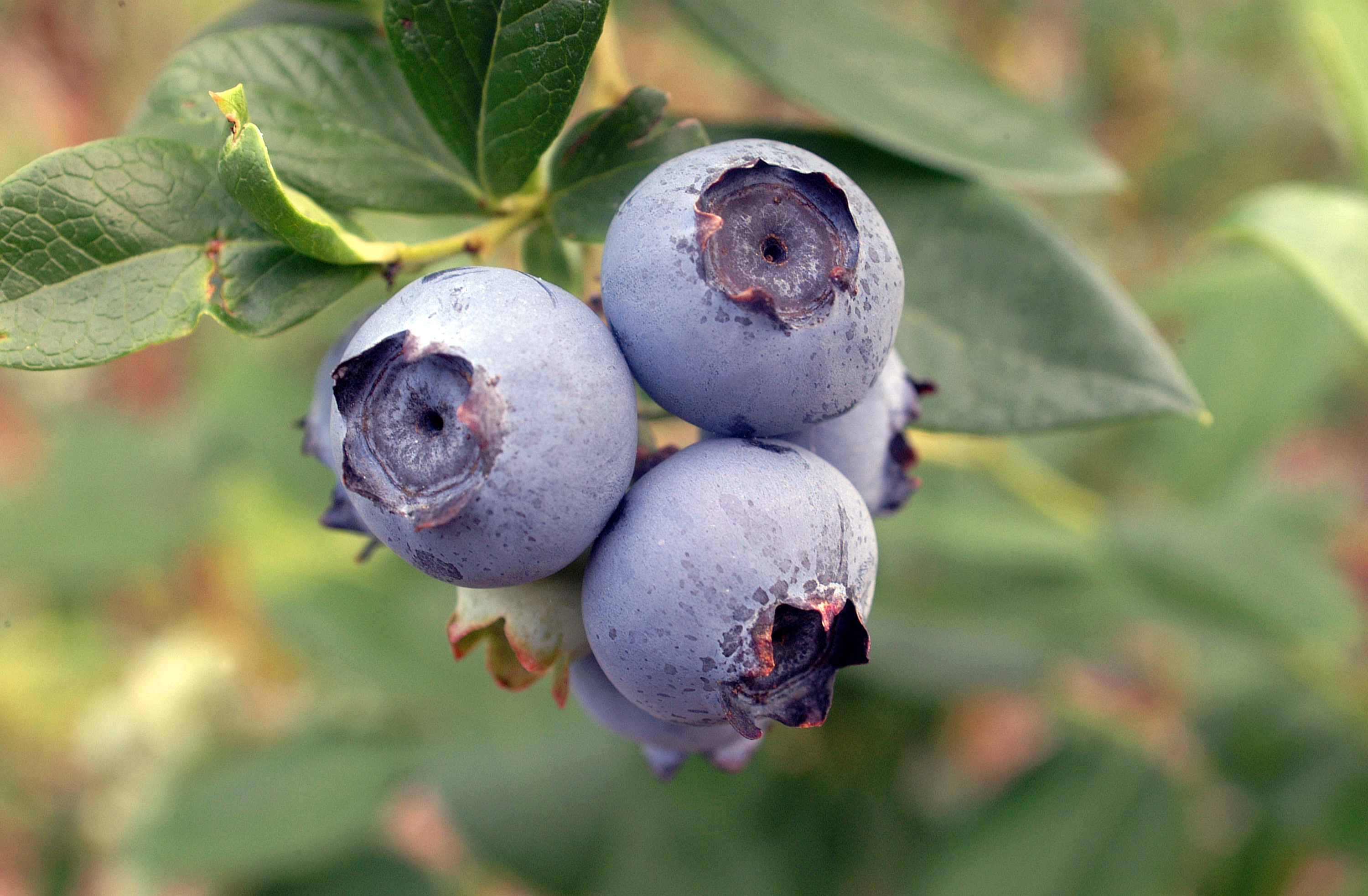
by Carrie Stevenson | May 1, 2017
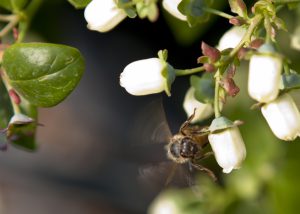
The Southeastern blueberry bee uses buzz pollination on a blueberry plant. Photo credit: Tyler Jones, UF IFAS.
This time of year, blueberry bushes are flowering and small fruit are coming onto the wild and cultivated bushes in north Florida. Many of us, myself included, look forward to the late-spring harvest of blueberries, taking our children out to u-pick operations and digging out family recipes for blueberry-filled desserts.
What many do not know, however, is that there’s a specialized bee that literally lives for this season. During the last few weeks, this little insect has been furiously pollinating blueberry bushes during its short, single-purpose lifetime.
The Southeastern blueberry bee, Habropoda labriosa is active only in mid-March to April when blueberry plants are in flower. They are smaller than bumblebees, and the yellow patches on their heads can differentiate males. Blueberry pollen is heavy and sticky, so it is not blown by the wind, and the flower anatomy is such that pollen from the male anther will not just fall onto the female stigma. Blueberry bees must instead attach themselves to the flower and rapidly vibrate their flight muscles, shaking the pollen out. Moving to the next flower, the bee’s vibrations will drop pollen from the first flower onto the next one. This phenomenon is called “sonicating” or ‘buzz pollination” and is the most effective method of creating a prolific blueberry crop.
Blueberry bees do not form hives, but create solitary nests in open, sunny, high ground. Females will dig a tunnel with a brood chamber large enough for one larva, filling it with nectar and pollen. After laying an egg, the female seals the chamber and the next generation is ready. The species produces only one generation of adults per year.
By the time we are picking fresh blueberries next month, you probably won’t see any blueberry bees around. However, we should all consider these insects’ short-lived but vitally important role in Florida’s $82 million/year blueberry industry!
For more information, check out the beautifully illustrated USDA Forest Service publication, “Bee Basics—An Introduction to our Native Bees,” or North Carolina State University’s entomology website.

by Beth Bolles | Mar 30, 2017
We often talk about sandy, nutrient poor soil in Florida and how difficult it is for growing many favorite landscape plants. Gardeners may spend considerable time and money amending soils with organic matter to improve quality.
The low maintenance approach is to embrace your sandy soil and consider plants that thrive in sandy, well-drained soil. One very attractive native shrub that actually prefers this type of soil is false rosemary, Conrandina canescens.
False rosemary is a member of the mint family that is well adapted to drier, sandy soils. It can be found in many coastal communities growing in natural areas. It is easily recognized in the spring and early summer by light purple blooms. Considered a small shrub or groundcover, False rosemary needs full sun. One plant can easily spread out to 4-5 feet in diameter with a height of 2-3 feet.
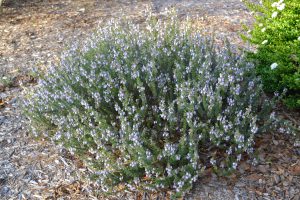
False rosemary is an attractive native plant for Gulf Coast landscapes. Photo by Beth Bolles, UF Escambia County Extension
False rosemary does have aromatic foliage and is attractive to bees. It is a very low maintenance plant once established and its few issues tend to be related to soils with too much moisture and plants being shaded after establishment. New seedlings will emerge around the main plant when growing conditions are right. If you want to try this native plant in your landscape, talk to a local nursery.
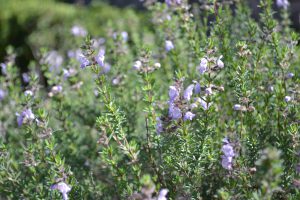
False rosemary flowers are attractive to pollinators. Photo by Beth Bolles, UF Escambia County Extension
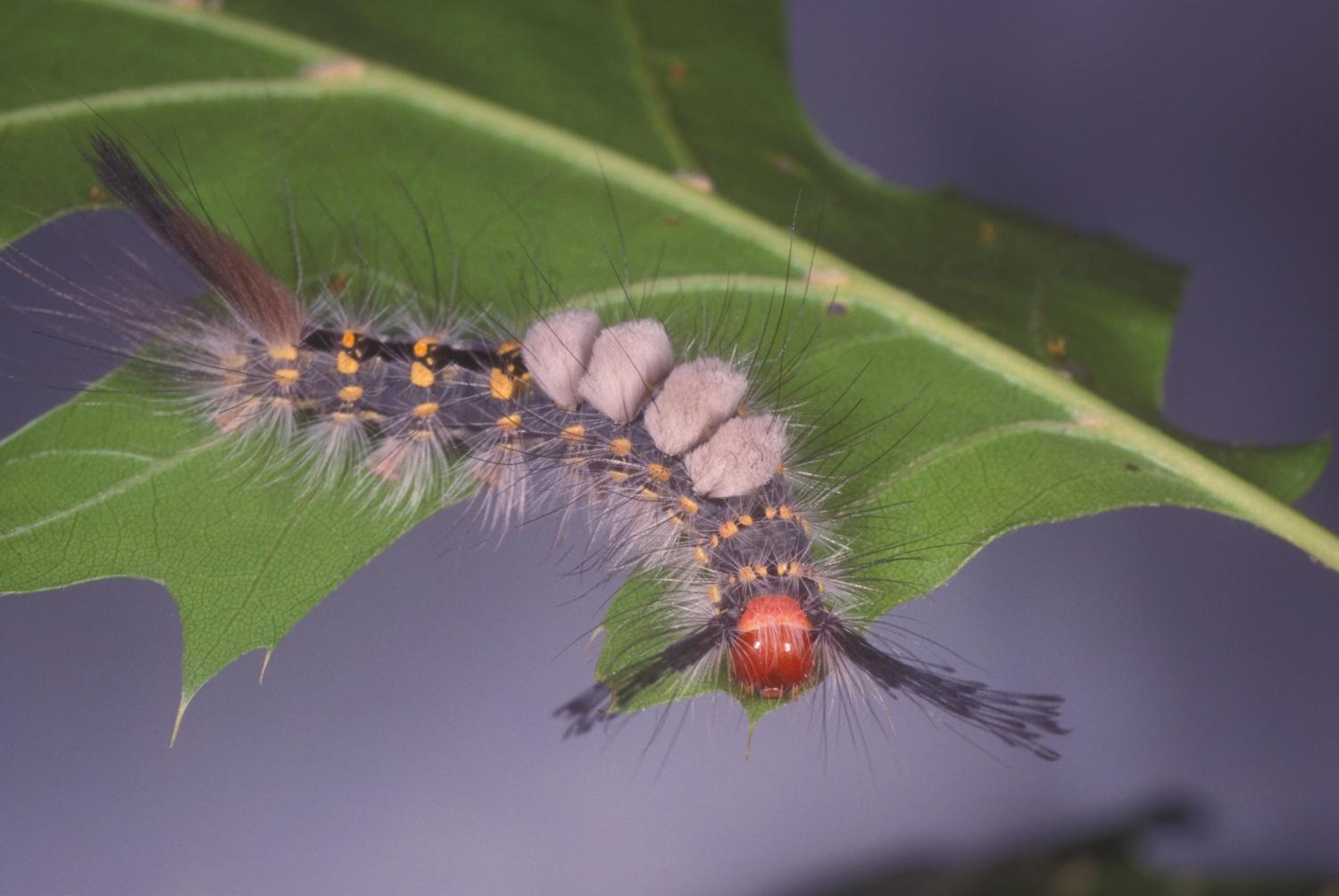
by Larry Williams | Oct 26, 2016
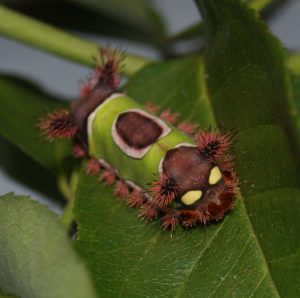
Saddleback Caterpillar – Image Credit Matthew Orwat
The reality of what happens deep down in the darkness of a fire ant mound hidden to human eyes or in the tunnels of a mole cricket where only creepy crawly things dare to enter may be too scary to believe.
University of Florida Institute of Food and Agricultural Sciences along with USDA introduced a tiny South American fly to the U.S. to help control the pesky imported fire ant. Literally, these introduced phorid flies cause the imported fire ants’ heads to fall off. They then use the decapitated heads to reproduce. The flies hover above the ants, dive in, latch on to the ant’s body and inject their eggs. The egg hatches, and a maggot wiggles its way into the ant’s head, where it grows for two to three weeks before secreting a chemical that dissolves the membranes holding the ant’s body together. In a few hours the ant’s head falls off. The maggot eats everything in it and then uses it as a pupae case. Gruesome, isn’t it?
Assassin bugs are frequently seen slowly crawling on shrubs in our landscapes. Most are brown to black but many are brightly colored. A common species is reddish-orange in the nymph stage. Assassin bugs feed on many harmful insects. Caterpillars are their favorite food.
They digest their prey before eating it. They do this by piercing their victim with their sharp beak, injecting digestive enzymes. This causes chaos on the unfortunate insect’s nervous system and liquefies the internal organs. The liquefied contents are then consumed, leaving only the shell of its kill. How tragic.
The larra wasp, an introduced predatory insect by University of Florida entomologists, enters a mole cricket tunnel. The female wasp will pounce on the mole cricket, wrestle with it and sting it on its soft underside. This immobilizes the mole cricket long enough to allow the wasp to deposit a single egg on its underside. The mole cricket recovers and burrows back into the ground. The wasp larva eventually hatches and slowly eats the mole cricket alive. Poor mole cricket.
We mere mortals should be aware of these horrifying happenings occurring in our own backyards. And we should be frightened by those people who attempt to kill every six-legged critter in sight because they have wrongly identified them as bad. In reality, less than one percent of all insects that exist are damaging to our plants. Most are of no consequence to our lawns, landscapes or gardens. And many are beneficial.
These beneficial insects are helping us gardeners battle the bad bugs during Halloween and year round.

by Beth Bolles | Oct 7, 2016
The year’s mild winter and frequent rain showers have created lush lawns and gardens with an abundance of insects. As a result, we are seeing many predator arthropods taking advantage of the available feast. One of the morning interesting creatures in the garden is the spiny orb weaver spider (Gasteracantha cancriformis) that has an interesting body shape.
Spiny orb weavers are common spiders in landscapes that might not be noticed since they are much smaller than the Yellow garden spider (Argiope aurantia) and the Golden silk spider (Nephila clavipes). Once viewed, the spiny orb weaver will catch your attention because it’s abdomen has six ‘spines’ or points that extend out. Spiders also have a mix of yellow, white, red, or black marking on the abdomen.
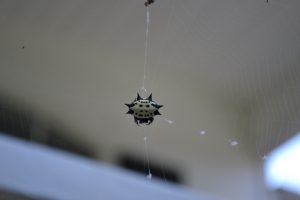
Spiny orb weaver in the center of the web waiting for a meal. Photo by Beth Bolles
Although spiders are small, the webs which are common amongst shrubs, trees, and edges of woods become quite substantial in the fall. There may be up to 30 spirals that extend out with the spider situated in the center. You may unexpectedly encounter a web when walking through the garden or mowing around trees and shrubs. There is no worry if a spider accidently gets on you as bites are not common and not considered serious.
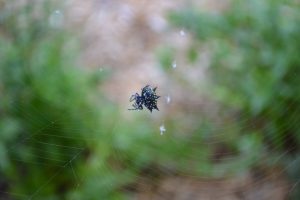
Spider working on her web. Photo by Beth Bolles
Some may refer to the spiny orb weaver as a crab spider based on its shape, but it is a web building where the true crab spiders are active hunters often found resting on flowers in order to ambush a meal.
Enjoy our fall weather and look out for this beneficial spider in your landscape.
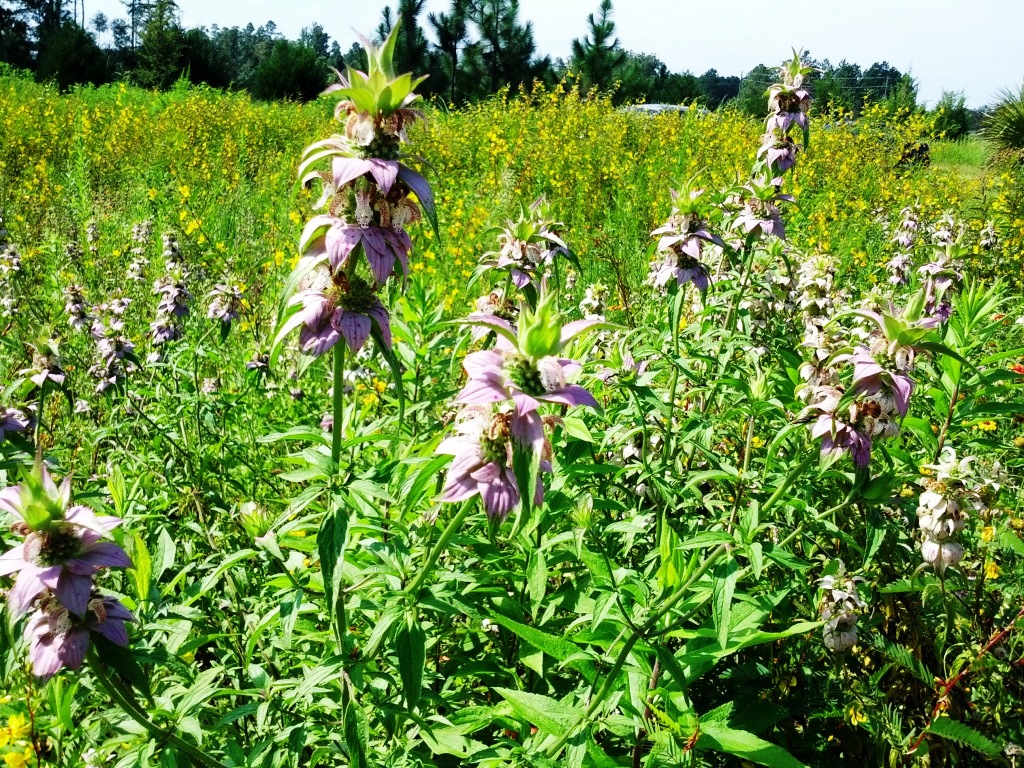
by Gary Knox | Oct 7, 2016
 A “Gardening for Pollinator Conservation” Workshop will take place Thursday, October 13, at the UF/IFAS North Florida Research and Education Center (NFREC) in Quincy. Pollinators are important in conserving native plants, ensuring a plentiful food supply, encouraging biodiversity and helping maintain a healthier ecological environment – – – the so-called “balance of nature.” Come learn how you can conserve and promote pollinators in your own garden, all while beautifying your own little piece of Nature.
A “Gardening for Pollinator Conservation” Workshop will take place Thursday, October 13, at the UF/IFAS North Florida Research and Education Center (NFREC) in Quincy. Pollinators are important in conserving native plants, ensuring a plentiful food supply, encouraging biodiversity and helping maintain a healthier ecological environment – – – the so-called “balance of nature.” Come learn how you can conserve and promote pollinators in your own garden, all while beautifying your own little piece of Nature.
As in previous years, nursery vendors will be selling pollinator plants at the Oct. 13 workshop, making it convenient for you to put into practice what you learn at the workshop! Registration is just $15 per person and includes lunch, refreshments, and handouts.
Check out the workshop details and register at: https://gardeningforpollinatorconservation.eventbrite.com/
What: Gardening for Pollinator Conservation
When: Thursday, October 13, 8:30 am to 5:00 pm EDT
Where: University of Florida/IFAS North Florida Research and Education Center, 155 Research Road, Quincy, FL. Located just north of I-10 Exit 181, 3 miles south of Quincy, off Pat Thomas Highway, SR 267.
Cost: $15 per person (includes lunch, refreshments and handouts)
Registration: https://gardeningforpollinatorconservation.eventbrite.com
For more information, contact: Gary Knox, gwknox@ufl.edu; 850.875.7105
For a printable Flyer click here: Gardening for Pollinators Workshop
Our workshop builds on previous successful pollinator workshops held at Leon Co. Extension last year and in Marianna in 2012. This workshop was developed as a collaboration of county faculty from several extension offices with folks from the Florida Fish & Wildlife Conservation Commission as well as UF/IFAS NFREC. Sponsors helping defray costs include Florida Native Plant Society – Magnolia Chapter, Gardening Friends of the Big Bend, Inc., Mail-Order Natives, and University of Florida/IFAS North Florida Research and Education Center.
We look forward to seeing you at the workshop!












